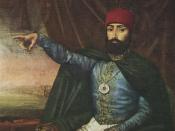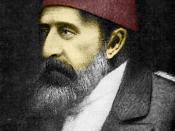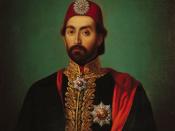The Young Turk and Iranian Constitutional Revolutions occurred during a period of transformation. Transformation not only from the nineteenth to the twentieth centuries, but also a transformation of society. For the Ottomans, the nineteenth century was the age of the European empires, many of whom influenced and manipulated the society. The result would be a Middle Eastern country emulating European society. This influence was not evident in Iran and those who held power would dictate the course of reform. The Young Turk Constitutional Revolution was the result of Tanzimat and "western" ideologies, imbedded in the cultural and social fabric of society, as opposed to the Iranian Constitutional Revolutions, which occurred as a result of individual and powerful groups with much to gain from a revolution. The Tanzimat ideology, although absent from the mentality of the Sultan, was inscribed in the political, social, and cultural aspect of Ottoman Empire, resulting in a movement to reinstate many of the reforms back into society.
The era of the Tanzimat spanned a period of 37 years (1829-1876) and was marked with a long series of reforms aimed at "westernizing" the society. Members of the Tanzimat bureaucracy (often educated in Europe) admired the technological, political, and social advances of European nations and would attempt to adopt this form of society as part of the Ottoman Empire. The Tanzimat realized that these reforms could not be implemented without general support from the public. In order for the reforms to be accepted, the Tanzimat would need to manipulate the mentality of the people to admire and praise "western" societies. This was done through a general introduction of European culture by use of translated European books and through Literacy movements. The result would be a mass translation of European books, literacy movements that would allow the public to...



The reform ferman
The Reform Ferman can be considered as the draft of first Ottoman Constitution. Even the Sultan had accepted a power higher than himself.
According to the ferman;
-The Ottoman Government had guaranteed the safety of the lives and the properties of both Muslim and Non-Muslim subjects.
-The taxes would have been regulated according to the annual incomes.
-The military services of the Ottoman subjects were re-organised.
-Executions without a court decision were strictly forbidden.
-Everybody has gained a right for inheritance.
-Bribery was forbidden.
-Law was regarded as the superior of all powers.
0 out of 0 people found this comment useful.